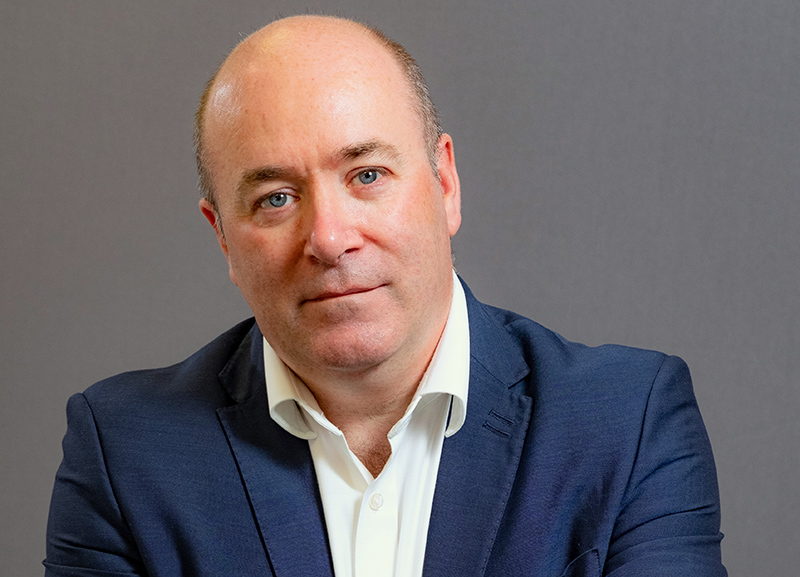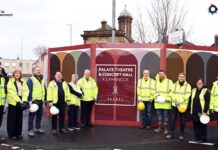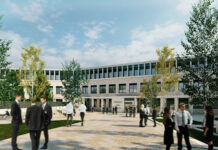
By Martin McKay, chief executive of Clyde Gateway
THE black and white interwar images of Clyde Gateway show Glasgow’s East End in its full, bustling glory. Homes and factories jostled for space in what was a sustainable community where people lived, worked, socialised, and worshipped within walking distance. Transport was efficient, with trams and trains playing vital roles, while power stations, gas works, and railway lines were embedded into the urban fabric.
The post-war East End, however, tells a different story, one that mirrors the familiar trajectory of many UK regeneration areas. Initially marked by massive industrial growth and high employment, the area thrived. But as industrial advancement and automation reshaped the economy, the East End began to decline. The impact of two world wars further accelerated this downturn. Post-war Britain saw public investment rise, yet cities like Glasgow faced depopulation as people migrated to new towns and high-rise housing. Traditional industries declined, and long-term unemployment took hold, leaving once-proud working-class communities behind.
In the 1970s, a new wave of urban regeneration began with initiatives like Glasgow East Area Renewal (GEAR), lasting until 1987 with mixed results. When urban regeneration company Clyde Gateway was formed in 2008, the area’s population had plummeted from over 90,000 to below 19,000 and was still declining. Over the past 16 years, however, Clyde Gateway has driven significant change through transformational projects, removing barriers to investment and revitalising the area.
The 2014 Commonwealth Games played a crucial role in this transformation. Sporting events can positively impact communities if their legacy is genuinely planned and focused on people, but Clyde Gateway’s regeneration success lies in a longer-term holistic approach. At the outset, Clyde Gateway’s Design Guide ‘Character and Values’ emphasised the tremendous character and potential of the area and its people. The Games served as a catalyst to unite existing communities, inspire the local population, and create attractive neighbourhoods where people could live, work and play.
In the decade since the Commonwealth Games, Clyde Gateway has achieved remarkable progress. The area now boasts over 4,000 new homes, increasing the population to approximately 28,000. Additionally, nearly 8,000 jobs have been created alongside learning, health, sports, and capacity-building initiatives. The regeneration has transformed previously derelict and contaminated land into thriving spaces, including Rutherglen Links Business Park and Clyde Gateway East, attracting international corporations like DHL and Torishima.
The regeneration efforts have retrofitted vacant buildings, such as EastWorks in Dalmarnock, which now houses modern office spaces. Overall, Clyde Gateway has supported nearly 5,000 businesses, creating a vibrant economic landscape throughout the East End and Rutherglen.
Health and wellbeing have also improved significantly thanks to the addition of over 100 acres of greenspace, including parklands like Cuningar Loop, Old Dalmarnock Road, Riverside Park, and Malls Mire Woodland Park. Cuningar Loop, once a derelict landfill, recently welcomed its 1,500,000th visitor.

The Commonwealth Games left a lasting legacy by attracting international sporting events to high-quality facilities like the Emirates Arena and Sir Chris Hoy Velodrome. These venues have hosted prestigious events such as the inaugural Cycling World Championships and the World Indoor Athletics Championships, putting Glasgow firmly on the global map.
Community initiatives like Healthy n Happy and Baltic Street Adventure Playground have further supported the local population. Healthy n Happy promotes local wellbeing and encourages the uptake of health screening, while Baltic Street Adventure Playground has given hundreds of children the space to adventure play in a safe environment.
The transformation of Clyde Gateway over the past decade highlights the importance of long-term, adaptable regeneration to meet the needs of communities. While much has been achieved, there is still more to do. Regeneration can be complex but if it is to be successful it must be centred around ‘people, place and jobs’ with people always at the forefront.











